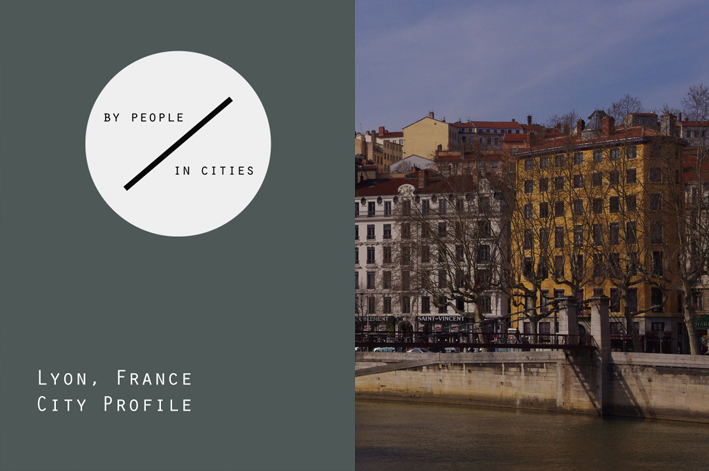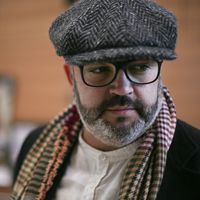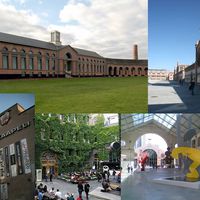By People / In Cities: Lyon | City Profile
 This month, By People / In Cities travels to France and looks in particular at the city of Lyon. Florent Petit takes a snapshot of Lyon’s contemporary art scene, starting from the most important platform for visual arts, the Lyon Biennale, but looking also at innovative spaces and initiatives that are modifying the urban landscape of the city.
This month, By People / In Cities travels to France and looks in particular at the city of Lyon. Florent Petit takes a snapshot of Lyon’s contemporary art scene, starting from the most important platform for visual arts, the Lyon Biennale, but looking also at innovative spaces and initiatives that are modifying the urban landscape of the city. [gallery ids="37137,37138,37139,37140,37141"]
Lyon, France’s second biggest urban zone with a population of 1.238 million of inhabitants is located at the confluence of the Saône and the Rhône rivers. It has gained in recent years an international reputation when it comes to its cultural scene. The Dance Biennale, the Fête des Lumières (Lights festival), held every year on December 8th, or the Nuits Sonores (indie and electronic music festival) have become highlights of the cultural calendar in France and certainly contributed to put the city on a map.
The image of this industrial city, first well known for its gastronomy, was lacking some consideration when it was about culture. A dramatic shift has been observed in less than a generation. Lyon has lost its former image of a “sleeping beauty” thanks to a willing policy of renovation of its architectural heritage, backing cultural events for both performing and visual arts and providing support and funds to local initiatives.
Today, Lyon stands as one of the best cities in France to get in touch with contemporary visual arts, with the world famous contemporary art biennale, but also thanks to a rich network of public and private run structures that have developed original initiatives to make today’s art closer to the widest audience.
Over the last two decades, Lyon has built a strong reputation thanks to the organisation of its Contemporary Art Biennale (first edition was held in 1991). Like other similar events trying to reflect the main tendencies of contemporary art at one moment, the Lyon Biennale is inviting an international curator in order to get each time a different vision and perspective of the international art scene. Chinese, Swiss or Argentinian curators have been invited in the past and Iceland-born Gunnar B. Kvaran will curate the 2013 edition.
But what is more specific to Lyon is probably the ways this event is spanning over the city, allowing to change the image of some of the city’s zones. Every edition is partly taking place in new spaces, located in different parts of town, that are not traditional venues to get in touch with art: a former cattle market, an abandoned silk factory and a garage have been used in the past. A church and a disused power station will welcome parts of the exhibition this year. The Biennale has cast bridges with urbanism policies in a metropolis that has an important architectural heritage and former industrial zones undergoing redevelopment projects. Each edition is an opportunity to restore a link between remote or run-down parts of town with the centre and with the inhabitants.
Another interesting point with the Biennale is its side project called "Veduta". In a country like France where public policies about culture mainly deal with the ways of bringing art closer to every single citizen, the "Veduta" project is an innovative and refreshing experience to talk about. It explores through its programmes, different ways to reduce the boundaries that can exist between contemporary art and the general audience, with several projects scattered throughout the city. The White Cube project, for instance, is an exhibition space settled in the heart of a low-rent public estate in the eastern suburb of Lyon. Inhabitants are invited to organize the entire art project from A to Z. Curators, registrars, keepers, welcoming team members are all living in the surroundings buildings.
Another example of this original approach is the “Trial of Contemporary Art” organised for the 2011 edition. As contemporary art is sometimes facing quite negative reactions, responsible of the “Veduta” programme proposed to organise a trial, with real prosecutors and attorneys, and any person willing to give is opinion to judge if, as some people think, contemporary art is really "pointless".
To sum it up, the Lyon Biennale has showed over the years a peculiar approach in the way of building projects, presenting artworks, taking place in the city and not fearing to face the sometimes cutting edge reactions provoked by the work of some artists of our time. While some other contemporary art biennales in France only lasted two or three editions, the Lyon Biennale is still here, more than twenty years after its inception.
Beside the Biennale, Lyon is a flourishing place to get in touch with contemporary art and understand it through original cultural programmes. The city has several institutions that definitely allow the metropolis to stand for one of the most important home for contemporary art in France. These include the MAC Lyon (museum of contemporary art deeply involved in the conception of the Biennale) located next to the widest park in town. It was designed by world-renowned Italian architect Renzo Piano, who kept the original white façade of a 1930 exhibition hall and married it with a modern building made of red bricks. The museum recently proposed an inclusive way to make the public participate to the museum’s life, asking people for one of its exhibition to send them an interpretation of American artist George Brecht Scores, to be presented and discussed on the museum’s blog.
The IAC (Contemporary Art Institute) located in the neighbouring town of Villeurbanne, is holding a public collection of contemporary art works, allowing loans to public institution scattered across the region such as schools and colleges. It also initiated in 2002 the remarked “Rendez-Vous” project, a contemporary art show dedicated to international young artists. The curating team of the exhibition is composed of ten curators of international biennales or triennales.
Artists or independent curators are also involved in some of the most noticeable art venues in town, such as “la Salle de Bains” (the Bathroom), a small art space that has invited local and international artists to create site-specific art works, or “Attrape-Couleurs” an artist residence located in a former town hall annex, situated in a northern and leafy part of town facing the Saône river and the scenic Ile Barbe.
Not to forget one of the most reputed and dynamic gallery dedicated to photography and images, “Le Bleu du Ciel”, where more than one hundred exhibitions where presented since its opening in 1999. It gave recently a new dimension to its activity by organising a monthly online showcase of a new photographer every month.
The contemporary art market also bears Lyon’s mark with the Wall Art Fair, alternating every two years with the Docks Art Fair, showing another example of the inventive initiatives taken in Lyon to refresh the exhibition of contemporary art. It proposes a different concept of presentation. Each participating gallery is provided with a single standard wall, with the same dimensions for all exhibitors to present the works of their artists, treating all participating galleries on a equal basis and putting them on the same level.
To close this non exhaustive coverage of Lyon’s visual arts scene, it is worth considering the Adele initiative, a web site presenting some of the most interesting contemporary art spaces and galleries in Lyon and its area.
Lyon also has a long tradition in printmaking, an activity that started here at the end of the fifteenth century and reached its peak during the Renaissance period. One can embrace this rich history in the Musée de l'imprimerie, located in a fifteenth century house, and realize that this is still a vivid part of Lyon’s cultural life through the activities of URDLA, the Centre international de l'estampe et du livre (International centre for Printing and Book). This art space opened thirty-five years ago when a group of artists bought a printing house that went bankrupt. Today, the centre, which is not only an exhibition space but also a place where artists can work and create, has turned into one of the most active places in the region for printing and paper artwork, with up to five exhibitions organised each year.
Today, an ambitious art project is bringing a new stone in the bridge cast between Lyon and the art of our time. In the framework of the Rives de Saône project, urbanists, architects, designers and artists are working together under the supervision of the Japanese artist Tadashi Kawamata to turn the two banks of the Saône river into a park and art promenade spanning over twenty-five kilometres on both sides of the river and creating a link between urban environment and rural landscape. This project will be completed in 2016, and will offer the opportunity to citizens of Lyon and neighbouring towns to reconnect with the river and enjoy art in a stunning and different setting. Another page opens in the rich history of Lyon as a nest for contemporary visual arts.
Photo credits: Vincent Mougenot
Florent Petit is a former project officer in the cultural unit of the French Embassy in Japan. He holds a Master’s degree in Art History from the Sorbonne University in Paris and in International Relations from the Institute of Political Studies of Lyon. Former lecturer of Chinese, Korean and Japanese art in the Ecole du Louvre in Paris, he has occupied several curatorial positions in museums in France (Asian Unit of the Musée du quai Branly, Paris) and Luxembourg (Mudam, Museum of contemporary art, Luxembourg City).
Relevant links:
http://www.biennaledelyon.com/
http://www.fetedeslumieres.lyon.fr/
http://www.nuits-sonores.com/
http://www.mac-lyon.com/mac/
http://i-ac.eu/
http://www.lasalledebains.net/
http://www.thewallartfair.com/
http://www.lebleuduciel.net/
http://www.docksartfair.com/
http://www.adele-lyon.fr/
http://www.culture.lyon.fr/culture
http://www.attrape-couleurs.com/
http://www.imprimerie.lyon.fr/imprimerie/
http://www.urdla.com/
http://www.lesrivesdesaone.com/
Similar content
01 Jun 2018
20 Dec 2013






